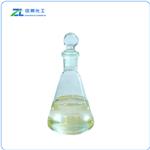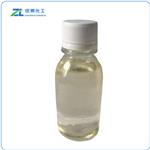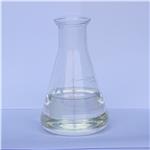Description
1-octen-3-ol, octenol (also known as mushroom alcohol) is a kind of secondary alcohol. It can emit special smell that can attract the biting insects such as mosquitoes. It is contained in the breath and sweat of mammals, and seems to be appreciated by insects such as mosquitoes. It is mainly produced by some plants and fungi including mushrooms and lemon balm through oxidative breakdown of linoleic acid. It can be used in combination with carbon dioxide to attract the insects to kill them. In addition, it can also be used as a food additive and used in certain perfumes. However, in animal study, it could disrupt dopamine homeostasis, and might be potentially involved in Parkinsonism.
Chemical Properties
1-Octen-3-Ol is a colorless to yellow liquid with a mushroom, green, vegetable, and fatty odor. It is used in edible flavor blends such as mushroom, tomato, potato, milk, and nut.It is a secondary alcohol derived from 1-octene. It is an unsaturated alcohol that exists as two enantiomers, the (R)-(–)-form and the (S)-(+)-form. It is found most often as the racemic mixture.
Common Applications
- cheese
- lavender
- potato
- savoury
- asparagus
- carrot
- cucumber
- mushroom
Natural occurrence: Clover, cooked artichoke, fish, mushroom, peas, soybeans, wheat bread, tea, and beef.
Uses
- 1-Octen-3-ol is a chemical that attracts biting insects such as mosquitoes. It occurs naturally in some plants, fungi, and molds; and it is a metabolite of linoleic acid. It is also found in human breath and sweat, which is unfortunate because it attracts mosquitoes and other biting insects and it was once believed that insect repellent DEET works by blocking the insects' octenol odorant receptors.
- Used as a flavoring agent in cheese and chocolate.
- Used as a perfuming agent in cosmetic industry.
- Since the discovery in the early 1980s that 1-octen-3-ol, isolated from oxen breath, attracts tsetse fly, there has been growing interest in exploring the use of this semiochemical as a possible generic lure for trapping host-seeking mosquitoes. Intriguingly, traps baited with 1-octen-3-ol captured significantly more females of the malaria mosquito, Anopheles gambiae, and the yellow fever mosquito, Aedes aegypti, than control traps, but failed to attract the southern house mosquito, Culex quinquefasciatus.
References
- http://www.chm.bris.ac.uk/motm/octenol/octenolh.htm
- https://en.wikipedia.org/wiki/1-Octen-3-ol
Description
l-Octen-3-ol has a powerful, sweet, earthy odor with a strong,
herbaceous note reminiscent of lavender-lavandin, rose, and hay.
It has a sweet, herbaceous taste. May be prepared from magnesium
amyl bromide and acrolein.
Chemical Properties
1-Octen-3-ol may occur
in the optically active form. It is found, for example, in lavender oil and is a steam-volatile component of mushrooms. l-Octen-3-ol is a liquid with an intense
mushroom, forest–earthy odor that can be prepared by a Grignard reaction from
vinylmagnesium bromide and hexanal. It is used in lavender compositions and in
mushroom aromas.
Chemical Properties
1-Octen-3-ol has a powerful, sweet, earthy odor with a strong, herbaceous note reminiscent of lavender–lavandin, rose
and hay. It has a sweet, herbaceous taste.
Occurrence
Originally reported found in the mushroom Armillaria matsutake, a parasite growing on the radical hairs of
Pinus densiflora in the forests of Japan; it has been isolated also in the essential oils of Mentha pulegium L., lavender and Mentha timjia.
Also reported found in over 160 foods and beverages including banana, kumquat peel oil, berries, currants, guava, grapes, raisin,
melon, pineapple, asparagus, potato, tomato, Mentha oils, thyme, wheat bread, cheeses, buttermilk, boiled egg, fish, cooked meats,
hop oil, beer, cognac, rum, grape wines, cocoa, coffee, tea, pecans, plum, oats, soybean, olive, cloudberry, plums, beans, mushroom,
marjoram, starfruit, sesame seed, fig, kelp, rice, beans, litchi, calamus, dill, licorice, pumpkin, buckwheat, sweet corn, corn tortilla,
malt, rice, wort, krill, rosemary, Bourbon vanilla, mountain papaya, endive, lemon balm, shrimp, oyster, crab, clam, scallop, truffle,
winter savory, anise hyssop and maté.
Uses
(±)-1-Octen-3-ol, is one of the volatiles responsible for mold`s odor. It can be used in combination with carbon dioxide to attract insects in order to kill them. In animal study, 1-Octen-3-ol has been shown to interfere with dopamine transport in the brain of fruit flies, so it might be an environmental agent involved in parkinsonism.
Preparation
From magnesium amyl bromide and acrolein.
Definition
ChEBI: An alkenyl alcohol with a structure based on a C8 unbranched chain with the hydroxy group at C-2 and unsaturation at C-11C-2.
Aroma threshold values
Detection: 14 ppb; recognition: 25 ppb
Taste threshold values
Taste characteristics at 10 ppm: mushroom, earthy, fungal, green, oily, vegetative, umami sensation and
savory-brothy.
General Description
1-Octen-3-ol occurs naturally in mushrooms. It is the most prominent odor volatile produced by fungi such as
Aspergillus,
Penicillium and
Fusarium species. 1-Octen-3-ol is also formed in major quantity when soybeans are soaked in water as a pretreatment before soymilk production. It is also a potent mosquito attractant.
Flammability and Explosibility
Not classified
Trade name
Matsutakeol (Takasago).
Biochem/physiol Actions
Taste at 0.01-0.20 ppm
Safety Profile
Poison by ingestion and
intravenous routes. Moderately toxic by skin
contact. When heated to decomposition it
emits acrid smoke and irritating fumes.




